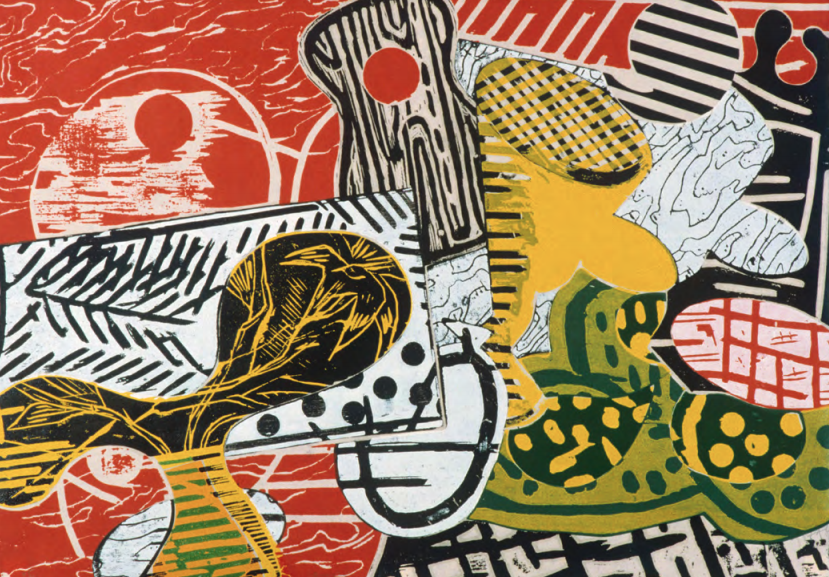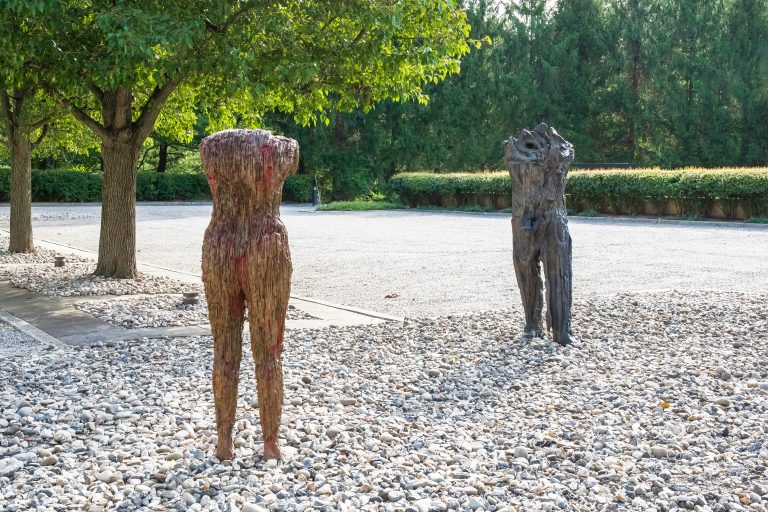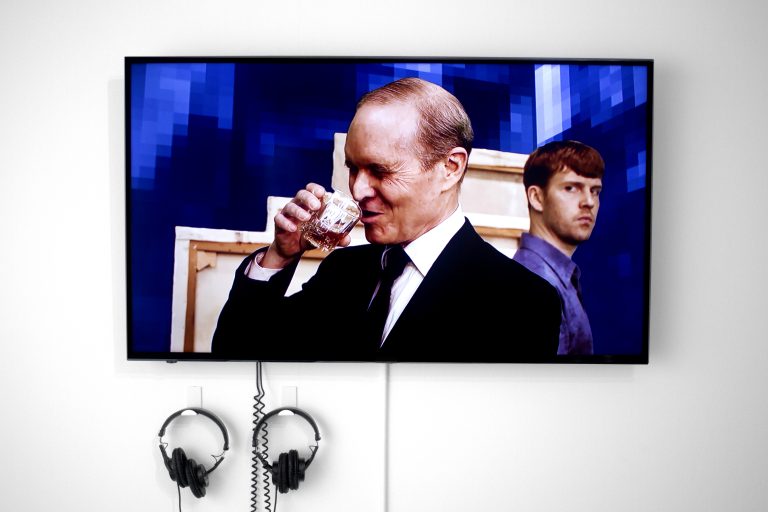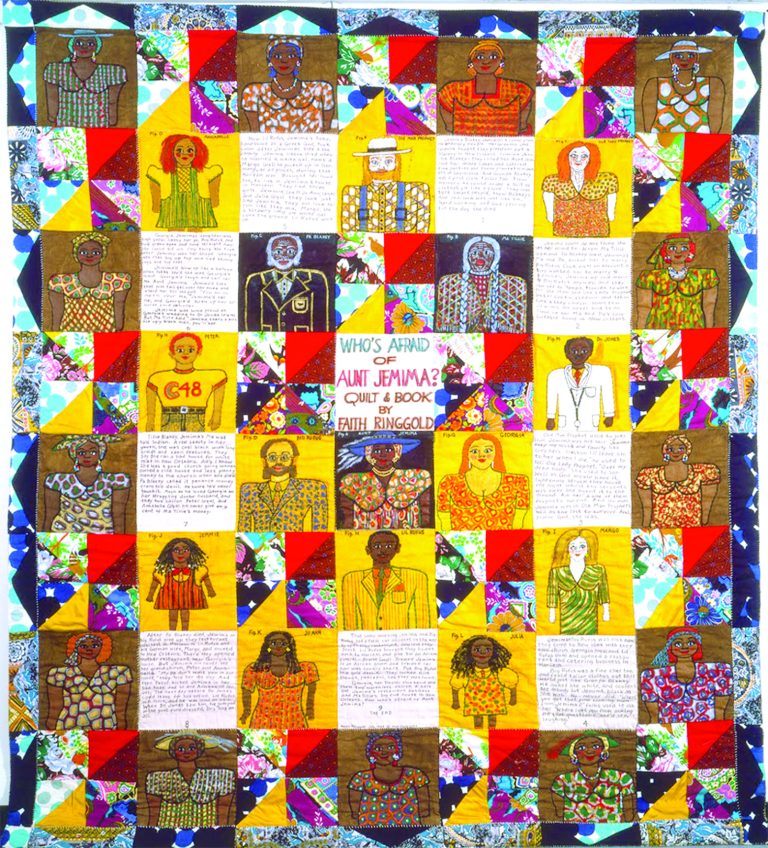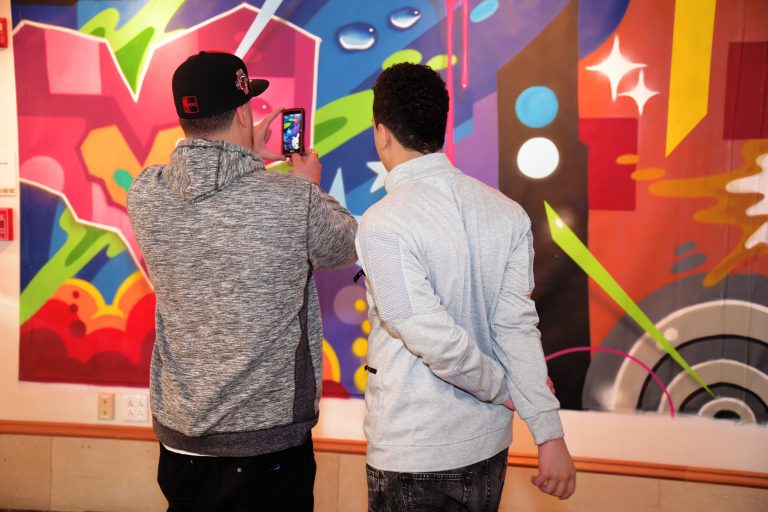A History in Printmaking
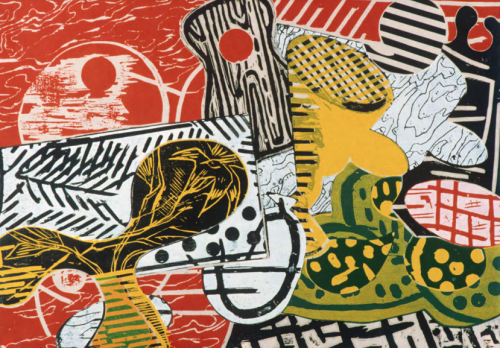
“It’s time to turn off your brain and use your eyes,” says Dr. Tracy Fitzpatrick, the Neuberger Museum of Art Director, who also curated the Museum’s Impressions: The Inventions of Printmaking exhibition.
This tour of works-on-paper from the Museum’s permanent collection covers major printmaking methods – relief, intaglio, lithography and silkscreen. It also answers the questions of both visitors who are new to the printmaking process and those who are seasoned in the topic: What is a print? How are they done? How can I tell one kind of print from another? What artists are making prints?
Fitzpatrick explains: “The purpose of this exhibition is to explain and show how prints are made in hopes that it will be used as a teaching moment for museum-goers, as well as for the students, teachers and staff of SUNY Purchase [where the museum is located].”
Printmaking has come a long way since 220 A.D., when wood block prints were first used to replicate images on fabric. This earliest method was relief printing, which used a wood matrix to allow for multiple copies to be made. This expelled the process of having to make copies of text, illustrations or artwork by hand.
That said, the first print on paper wasn’t made until the 7th century. Since then, many different techniques and print types have been developed and honed.
Walking around the gallery, visitors may be surprised to see how many of the printmakers they are familiar with as painters. Pablo Picasso and Helen Frankenthaler both used the relief method. Picasso used reduction linocut in Femme endorme (1962) and Frankenthaler’s Savage Breeze (1974) is a woodcut.

Meanwhile, works by Francisco de Goya and Alex Katz both demonstrate the intaglio technique. In relief prints, the raised portion of the matrix produces the print; however, intaglio is the opposite. With this technique, the hollow portions of the engraved material hold the ink.
De Goya’s Disparate feminino (Feminine Folly) (circa 1815-1823) uses etching and aquatint, while Katz’s The Striped Shirt (1980) on display is the second print from an edition of eight.
Lithographs mimic drawings. Screenprints are a common stenciling method. Both use a flat matrix that has no incised or raised lines or shapes. Two contrasting lithographs on view in the Impressions exhibition are Robert Rauschenberg’s Water Stop (1968) and Marisol’s Family Portrait (1961).
Lee Bontecou’s Untitled, 1967 screenprint is printed on muslin mounted on board; but, perhaps the most famous name in screenprinting is Andy Warhol, who added diamond dust to his Shoes (1980) print.
After the Museum reopens to the public on February 2, the Impressions exhibition will remain on view through February 27.
A version of this article first appeared in the February 2022 issue of ArtsNews, ArtsWestchester’s monthly publication. ArtsNews is distributed throughout Westchester County. A digital copy is also available at artsw.org/artsnews.
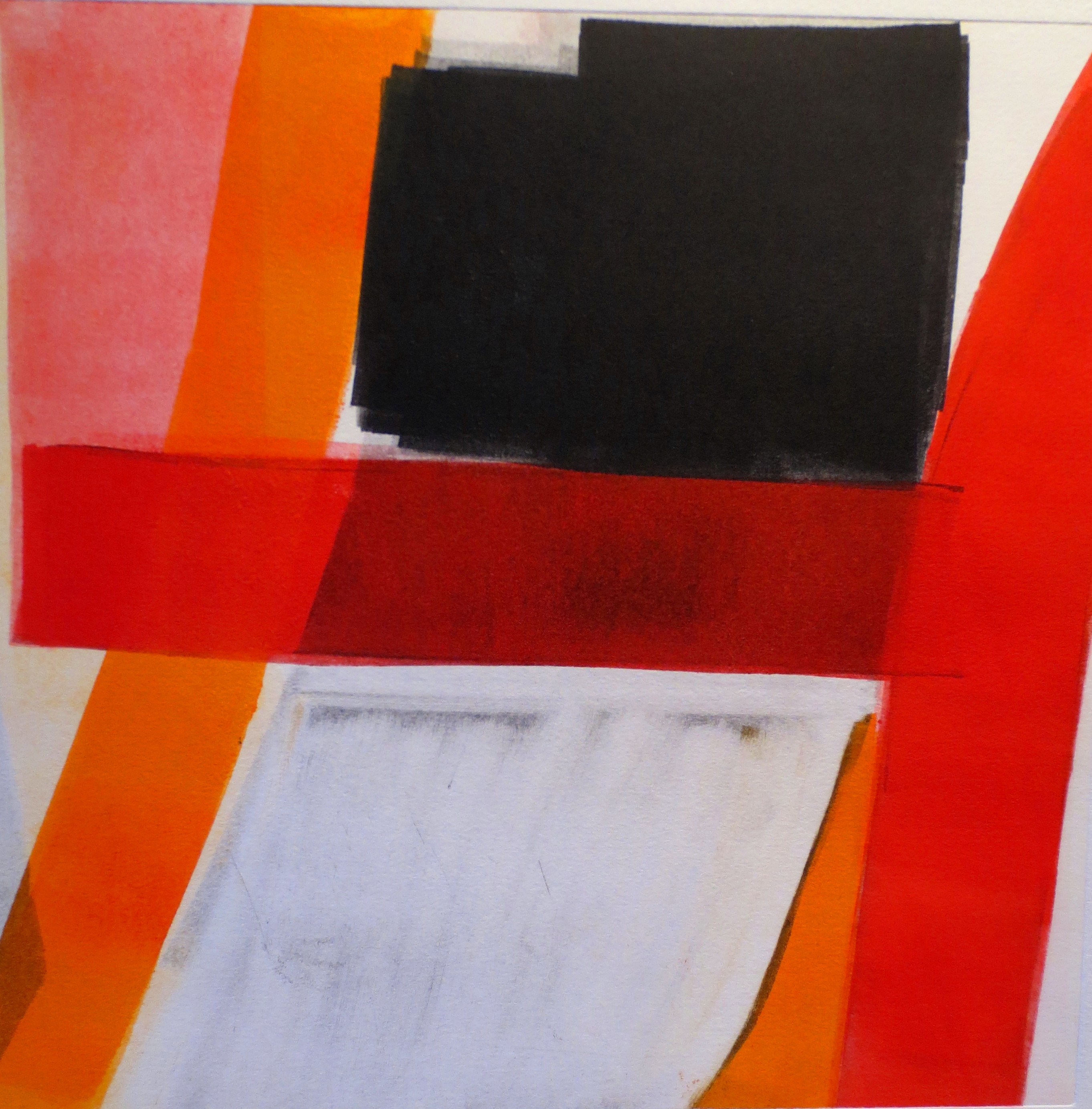
About Barbara Shapiro
Color and Shape: a Word about How I Work I am a Printmaker. I left the world of figurative painting and found myself in the world of vibrating colors and shapes. I hadn’t felt these things so intensely until I began printmaking. How harmonious or jarring colors can be; how they promote or tamp down what surrounds them; how their weight influences the shapes I create. I use sequential printing method. Each successive printing alters the character of the print with often-unexpected results. When the print is finally released from the press there is a thrill of revelation. This excitment and discovery is what propels me forward.
I am a printmaker who is propelled by a sense of risk taking; I enjoy pushing the boundaries of the work I do. Each process offers opportunities to move the needle. After printing a monotype, monoprint, pronto plate lithograph, dry point, wood cut or mixed media piece I am thinking about how I can push it further. That may involve combining it with something else to make it richer, or change its character or reinforce what is there already. When the print is finally released from the press there is a thrill of ultimate revelation. This excitement and discovery is what propels me forward. I have taken classes at the Center for Contemporary Printmaking and the Silvermine School of Art in Connecticut, and the Westchester Center for the Arts in New York. I have shown my works in galleries and exhibitions in New York and Connecticut.

